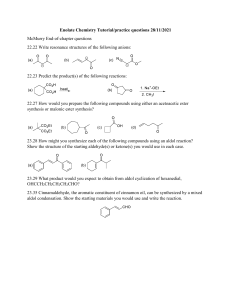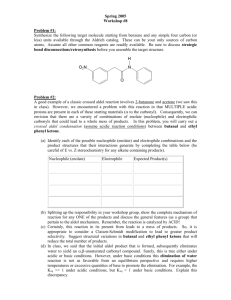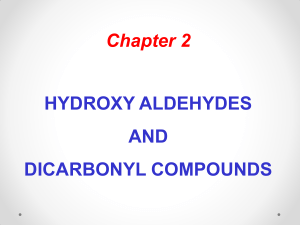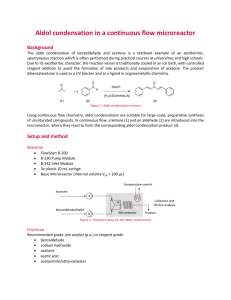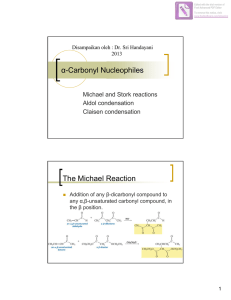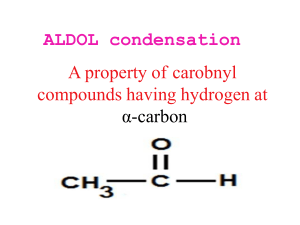Synthesis of Tetraphenylcyclopentadienone
advertisement
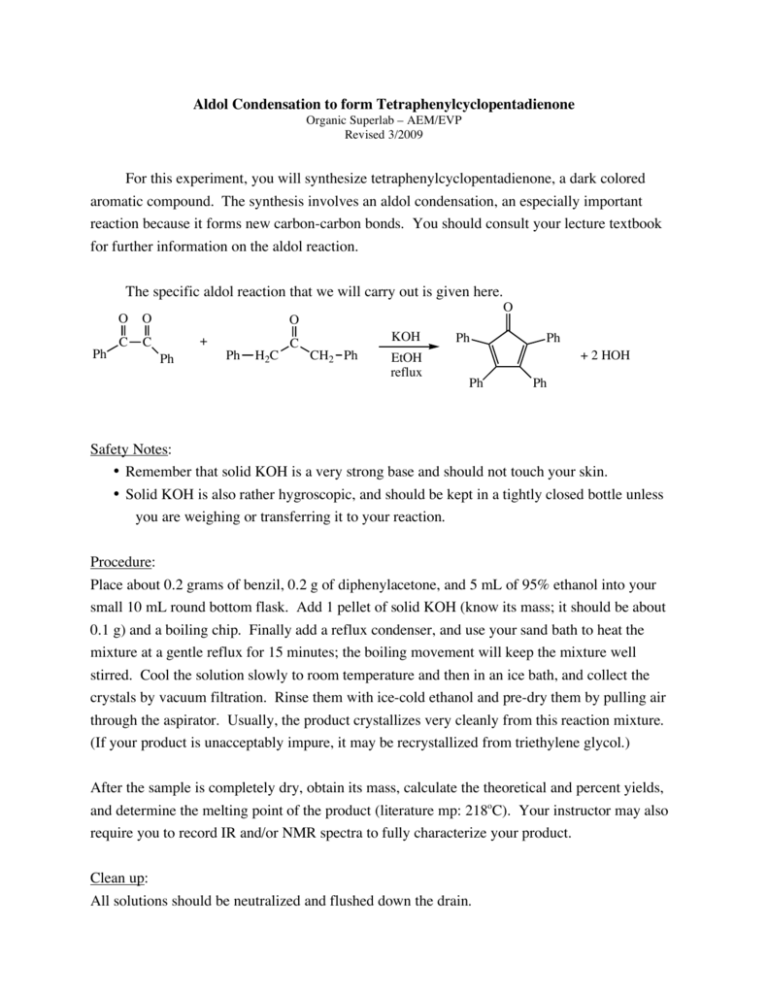
Aldol Condensation to form Tetraphenylcyclopentadienone Organic Superlab – AEM/EVP Revised 3/2009 For this experiment, you will synthesize tetraphenylcyclopentadienone, a dark colored aromatic compound. The synthesis involves an aldol condensation, an especially important reaction because it forms new carbon-carbon bonds. You should consult your lecture textbook for further information on the aldol reaction. The specific aldol reaction that we will carry out is given here. Ph O O C C O O + Ph Ph H2C C KOH CH2 Ph EtOH reflux Ph Ph + 2 HOH Ph Ph Safety Notes: • Remember that solid KOH is a very strong base and should not touch your skin. • Solid KOH is also rather hygroscopic, and should be kept in a tightly closed bottle unless you are weighing or transferring it to your reaction. Procedure: Place about 0.2 grams of benzil, 0.2 g of diphenylacetone, and 5 mL of 95% ethanol into your small 10 mL round bottom flask. Add 1 pellet of solid KOH (know its mass; it should be about 0.1 g) and a boiling chip. Finally add a reflux condenser, and use your sand bath to heat the mixture at a gentle reflux for 15 minutes; the boiling movement will keep the mixture well stirred. Cool the solution slowly to room temperature and then in an ice bath, and collect the crystals by vacuum filtration. Rinse them with ice-cold ethanol and pre-dry them by pulling air through the aspirator. Usually, the product crystallizes very cleanly from this reaction mixture. (If your product is unacceptably impure, it may be recrystallized from triethylene glycol.) After the sample is completely dry, obtain its mass, calculate the theoretical and percent yields, and determine the melting point of the product (literature mp: 218oC). Your instructor may also require you to record IR and/or NMR spectra to fully characterize your product. Clean up: All solutions should be neutralized and flushed down the drain.
